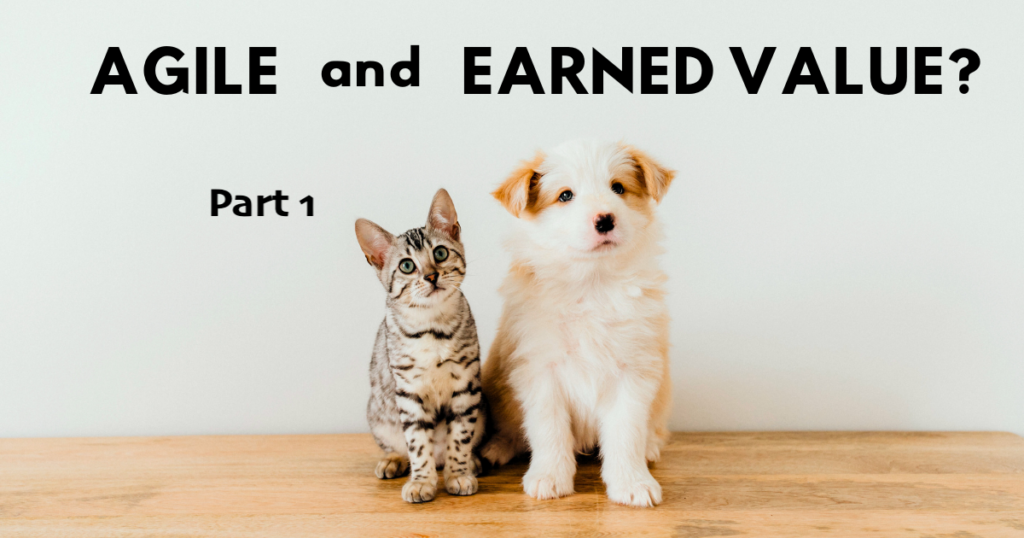Agile and Scrum for Earned Value Professionals (Part 1 of 2): Agile and Earned Value

The Agile Approach to EVM Explained. And How to Apply It to Non-Software Applications
The best project managers strive to be the trend, not chase the trend. But when it comes to Project Management (PM) approaches like Agile and Scrum, how do you determine what’s true innovation and what’s just a passing fad? On paper, Agile and Scrum are exciting and full of promise. However, they’re also steeped in corporate mysticism, and many of us are unsure whether or how they can be applied to Earned Value Management (EVM). After all, Agile and Scrum were originally designed for software development. But did you know that these approaches can offer transformative value and efficiency improvements for non-software-related project elements, too?
In Part 1 of this two part article on Agile and Scrum, we cut through the noise and provide a concise explanation of this powerful approach to PM. We explore how teams can apply these tenets to EVM.
What is Agile? 4 Core Values, 12 Principles
As a philosophy originally focused on software development, the Agile Manifesto has since expanded to apply to a wide range of PM use cases, including EVM. With Agile, we use 4 core values and 12 principles to improve project delivery and performance.
What are the 4 values of Agile? The 4 values help teams focus on the most important aspects of a project. These values stress the importance of working software, simplicity, customer collaboration, and flexibility over other concerns.
What are the 12 principles of Agile? The 12 principles help teams focus on more granular concepts and perspectives that are key to the success of PM activities. These principles include, among others, measuring progress by working results, using face-to-face communication wherever possible, trusting self-organized teams to complete their objectives, setting a sustainable pace of work, and getting team members to work together on a daily basis.
When the 4 values and 12 principles are applied in concert, Agile is more than just a process. It’s a way of being that helps teams look at their activities and approaches from a new perspective. This invariably reveals fresh and unexpected opportunities for improvement.
How Does Agile Earned Value Help?
Earned value is driven by the concept of snapping a baseline, which refers to setting and controlling scope, schedule, and cost targets. In the traditional approach to EVM, teams tend to follow the waterfall method, which honors the technical scope as paramount. In this way, most projects using EV are treated as if they are scope-boxed. This is great for delivering on objectives, but can trigger schedule delays and cost overruns if taken to an inflexible extreme.
This is where the Agile earned value mindset can help. Agile allows teams to recognize the flexibility of scope (at least in projects where the scope actually is flexible). This gives teams more freedom to adapt to changing requirements without losing focus on delivering valuable capabilities or features while enhancing overall efficiency. Also, when teams adopt an Agile mindset, they create incremental improvements throughout the entire process that create downstream efficiencies.
Examples of Agile Values and Principles in Action
Here are some examples of Agile values and principles applied to non-software scenarios in EVM:
Core Value 2 (Simplicity): When a team is willing to simplify a process, even if it means spending more time initially on a task, they learn to develop tools and methods that can be applied to future tasks. This Agile mindset is key to building an arsenal of simplified and more efficient processes that can benefit your organization in the long run. Without this willingness to optimize and simplify processes, no process improves. In the EV world, perhaps focus on streamlining the monthly reporting cadence.
Core Value 4 (Responding to change over following a plan): Unexpected pivots can be frustrating for any team, especially if they occur again and again. When this happens, morale slides and productivity drops. However, a team that values responding to change over following a rigid plan will be more resilient in the face of uncertainty. By prioritizing adaptability and embracing change, a team is better equipped to handle unforeseen issues and maintain high levels of productivity. In the EV world, look at ways to continuously improve EV tools and make baseline changes and forecast updates easier for the project team. Integrate data so that changing source or master data flows through to detailed data. Build in data validation to catch errors and focus on leading indicators to stay on track and remove the need for frequent replanning.
Principle 12 (Use regular reflections on team performance to boost effectiveness and efficiency): In the military, successful leadership requires understanding your subordinates’ capabilities and limitations. The same is true in business. To ensure project success, leaders must adapt to challenges—such as understaffing, budget constraints, or scheduling issues—with a realistic grasp of what’s possible. Simply wishing for success with an existing team is not enough; effective leadership involves proactive problem-solving and providing the resources and support a team needs to overcome obstacles and achieve their goals. In the EV world, look to provide just-in-time training and scenario-based learning experiences to increase the team’s capabilities. Obsessively track lessons learned and tweak EV processes to make EV a go-to tool — and not a burden — to the project team.
Conclusion
Now that we’ve explored how Agile works for EVM, you may be thinking about the different ways you can apply Agile values and principles in your own projects. In Part 2 we discuss the art of using Scrum, a powerful framework for putting Agile into action.
Could Agile values and principles benefit your projects? Send us an email and let’s talk!
Subscribe to our Newsletter:







